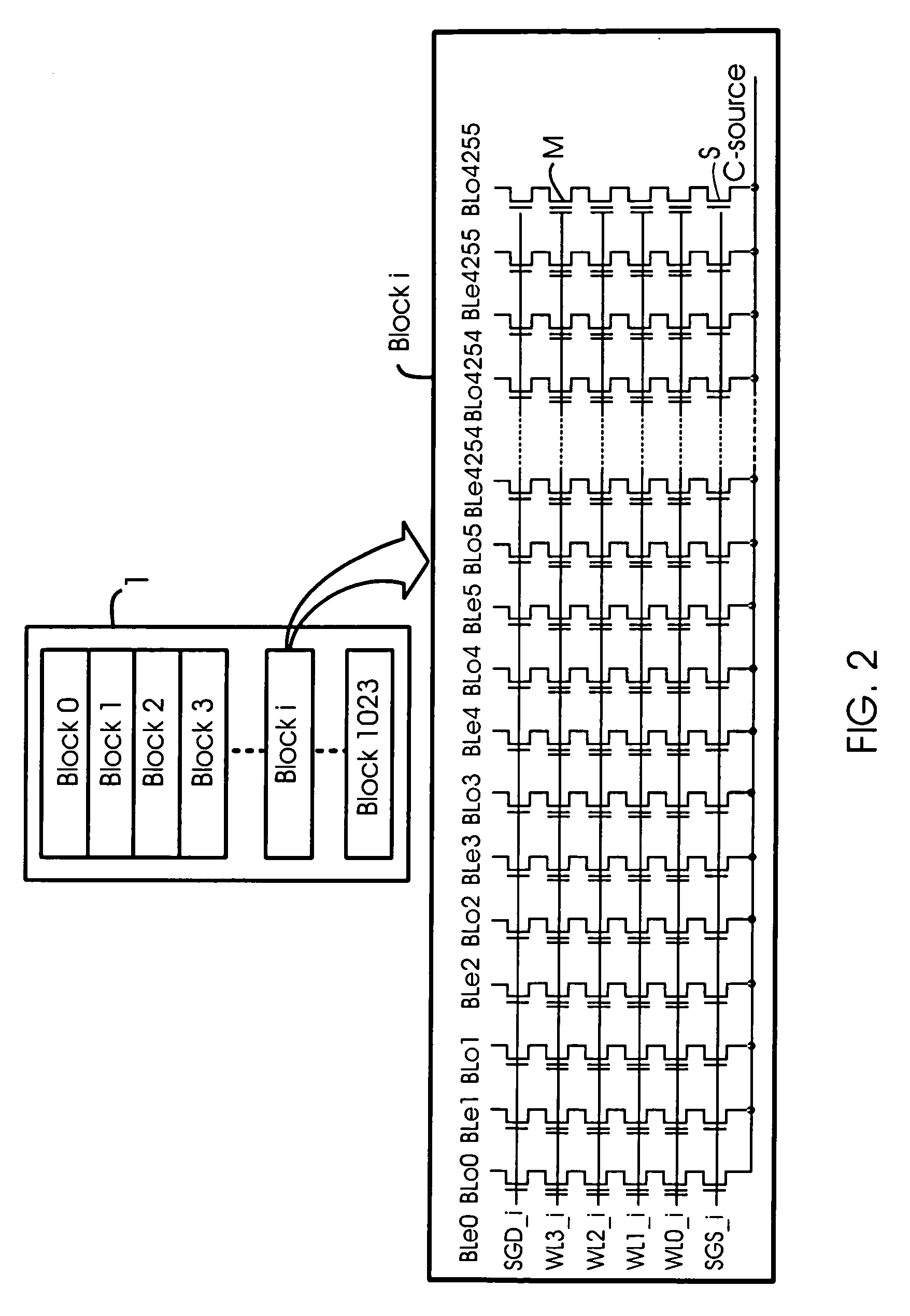Method and system for programming multi-state non-volatile memory devices
a multi-state, non-volatile technology, applied in the field of flash memory devices/systems, can solve the problems of programming multi-state memory cells and disturbing data stored in other memory cells
- Summary
- Abstract
- Description
- Claims
- Application Information
AI Technical Summary
Benefits of technology
Problems solved by technology
Method used
Image
Examples
Embodiment Construction
Example Non-Volatile Memory System
[0028]With reference to FIGS. 1-7, a specific non-volatile memory system is described in which the various aspects of the present invention are implemented, in order to provide specific examples. FIG. 1 is a block diagram of a flash memory system. Memory cell array 1 including a plurality of memory cells M arranged in a matrix is controlled by a column control circuit 2, a row control circuit 3, a c-source control circuit 4 and a c-p-well control circuit 5.
[0029]Column control circuit 2 is connected to bit lines (BL) of the memory cell array 1 for reading data stored in the memory cells (M), for determining a state of the memory cells (M) during a program operation, and for controlling potential levels of the bit lines (BL) to promote the programming or to inhibit the programming. Row control circuit 3 is connected to word lines (WL) to select one of the word lines (WL), to apply read voltages, to apply a program voltages combined with the bit line ...
PUM
 Login to View More
Login to View More Abstract
Description
Claims
Application Information
 Login to View More
Login to View More - R&D
- Intellectual Property
- Life Sciences
- Materials
- Tech Scout
- Unparalleled Data Quality
- Higher Quality Content
- 60% Fewer Hallucinations
Browse by: Latest US Patents, China's latest patents, Technical Efficacy Thesaurus, Application Domain, Technology Topic, Popular Technical Reports.
© 2025 PatSnap. All rights reserved.Legal|Privacy policy|Modern Slavery Act Transparency Statement|Sitemap|About US| Contact US: help@patsnap.com



